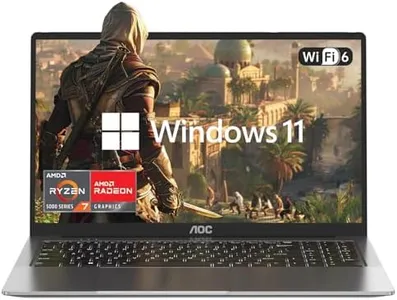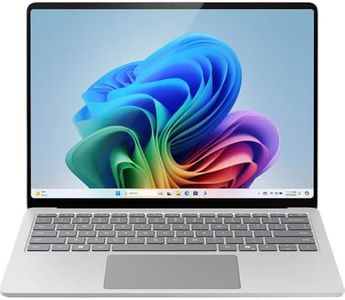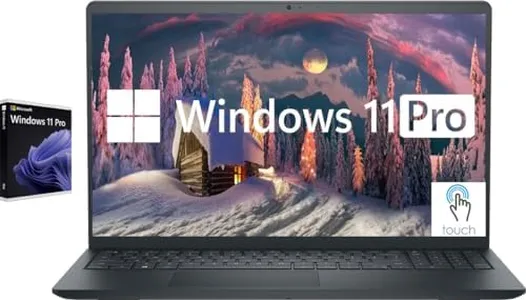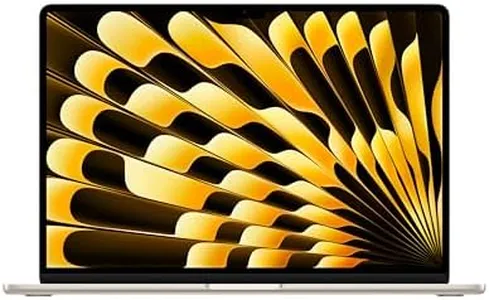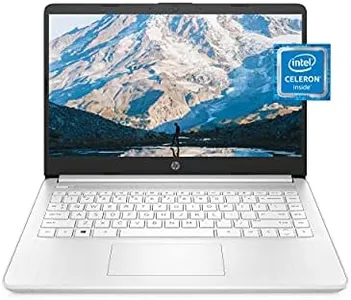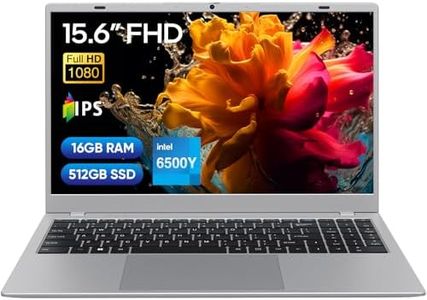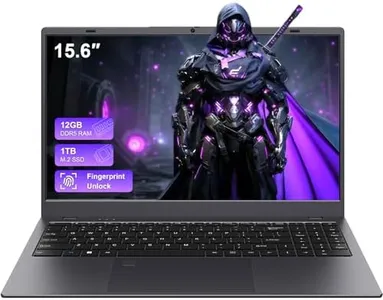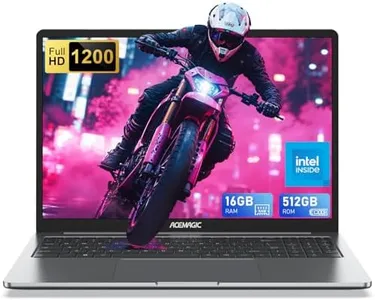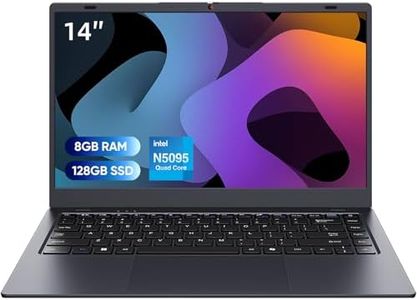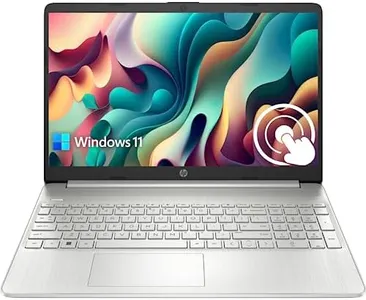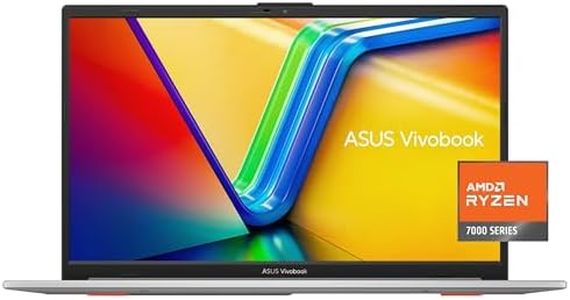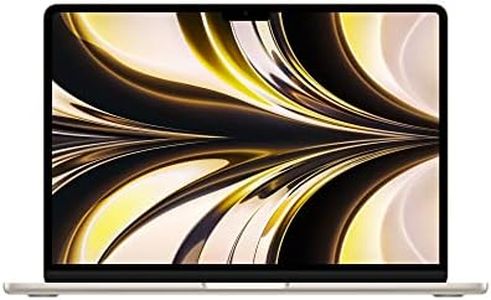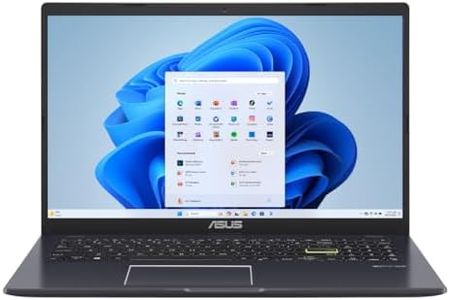10 Best School Laptops 2025 in the United States
Our technology thoroughly searches through the online shopping world, reviewing hundreds of sites. We then process and analyze this information, updating in real-time to bring you the latest top-rated products. This way, you always get the best and most current options available.

Our Top Picks
Winner
Microsoft Surface Laptop (2024), Windows 11 Copilot+ PC, 13.8" Touchscreen Display, Snapdragon X Plus (10 core), 16GB RAM, 256GB SSD Storage, Platinum
Most important from
815 reviews
The Microsoft Surface Laptop (2024) is a solid choice for students who want a stylish, lightweight, and powerful laptop for schoolwork. It runs on a Snapdragon X Plus 10-core processor paired with 16GB of fast LPDDR5x RAM, which means it can handle everyday tasks like browsing, writing papers, and video calls smoothly, plus it’s optimized for AI-powered features with Windows 11 Copilot+. The 256GB SSD provides decent storage, though some users might find it limited if they need to store a lot of files or large media.
A standout feature is its all-day battery life, rated up to 20 hours, which is great for long days on campus without constant charging. The 13.8-inch touchscreen offers a bright, sharp 2304x1536 resolution with HDR, making it nice for reading, streaming, or creative work. Weighing just under 3 pounds and featuring a thin aluminum design, this laptop is very portable and easy to carry in a backpack. Connectivity options include the latest Wi-Fi 6 (802.11ax), supporting fast and stable internet connections.
One downside is that it uses an integrated graphics chip rather than a dedicated one, so it’s not suited for heavy gaming or intensive graphic tasks. Also, while the Snapdragon processor is efficient and powerful for many tasks, it might not run all traditional Windows apps as smoothly as some Intel or AMD chips. This Surface Laptop is well-suited for students who want a premium, versatile laptop focused on productivity, long battery life, and modern AI features, but it may be less ideal for those needing lots of storage or advanced gaming and graphics performance.
Most important from
815 reviews
Dell Inspiron Touchscreen Laptop, 15.6" Business & Student Laptop Computer, Windows 11 Pro Laptop 32GB RAM 1TB SSD, Intel i5-1155G7 Processor, Full HD IPS Display, Numeric Keypad, HDMI, Carbon Black
Most important from
863 reviews
The Dell Inspiron Touchscreen Laptop is a versatile choice for students and professionals alike. Featuring an Intel Quad-Core i5-1155G7 processor with 4 cores and 8 threads, it ensures smooth multitasking and quick performance. The 32GB RAM is a significant advantage, handling intensive applications and multitasking with ease. The 1TB SSD offers ample storage for projects, files, and applications, while also providing faster boot-up times compared to traditional HDDs.
The 15.6-inch Full HD IPS touchscreen display with anti-glare technology is ideal for students, providing clear, sharp visuals and reducing strain during long study sessions. However, the brightness at 220 nits might be a bit dim for outdoor use. Weighing 3.65 pounds, it strikes a balance between portability and screen size, making it easy to carry around campus. Connectivity options include Wi-Fi 5, Bluetooth, multiple USB ports, HDMI, and a headphone/microphone combo jack, which is great for staying connected and collaborating.
The inclusion of a numeric keypad is a bonus for those dealing with a lot of data entry. Running on Windows 11 Pro, it is well-suited for education and professional use, supporting various modern applications and security features. The lack of an optical drive might be a drawback for those who still use CDs or DVDs. In summary, this laptop offers robust performance, ample storage, and is suitable for a variety of tasks, making it a solid choice for students who need a reliable and efficient device for their educational needs.
Most important from
863 reviews
Apple 2024 MacBook Air 15-inch Laptop with M3 chip: Built for Apple Intelligence, 15.3-inch Liquid Retina Display, 16GB Unified Memory, 256GB SSD Storage, Backlit Keyboard, Touch ID; Starlight
Most important from
1475 reviews
The Apple 2024 MacBook Air 15-inch with the new M3 chip is a strong contender for students needing a reliable, portable laptop for school. Its 8-core CPU and up to 10-core GPU offer fast performance that can handle everyday tasks like writing papers, browsing, and multimedia smoothly. With 16GB of RAM, multitasking works well, and the 256GB SSD provides quick storage access, though some users might find the storage a bit limited for large files or many apps. The battery life is impressive, lasting up to 18 hours, which means you can use it throughout a full school day without recharging.
The 15.3-inch Liquid Retina display is large and vibrant, making it comfortable for reading and watching educational videos. Weighing just over 3 pounds and being slim, it’s easy to carry around campus or between classes. It runs macOS, which integrates seamlessly with iPhones and other Apple devices, adding convenience if you're already in the Apple ecosystem. Connectivity includes two Thunderbolt ports, Wi-Fi 6E, and Bluetooth 5.3, covering most needs, though the limited number of ports might require adapters for some users.
While the base storage size might need upgrading for those who store many files locally, the MacBook Air's price is usually higher compared to other laptops in the school category. This laptop is an excellent choice for students who want a stylish, powerful, and long-lasting device that pairs well with other Apple gadgets, especially if school work involves creative apps or if you value excellent battery life and display quality.
Most important from
1475 reviews
Buying Guide for the Best School Laptops
Choosing the right laptop for school can significantly impact your productivity and learning experience. It's important to consider various factors to ensure the laptop meets your academic needs and fits your lifestyle. Here are some key specifications to look at when selecting a school laptop, along with explanations to help you make an informed decision.FAQ
Most Popular Categories Right Now
